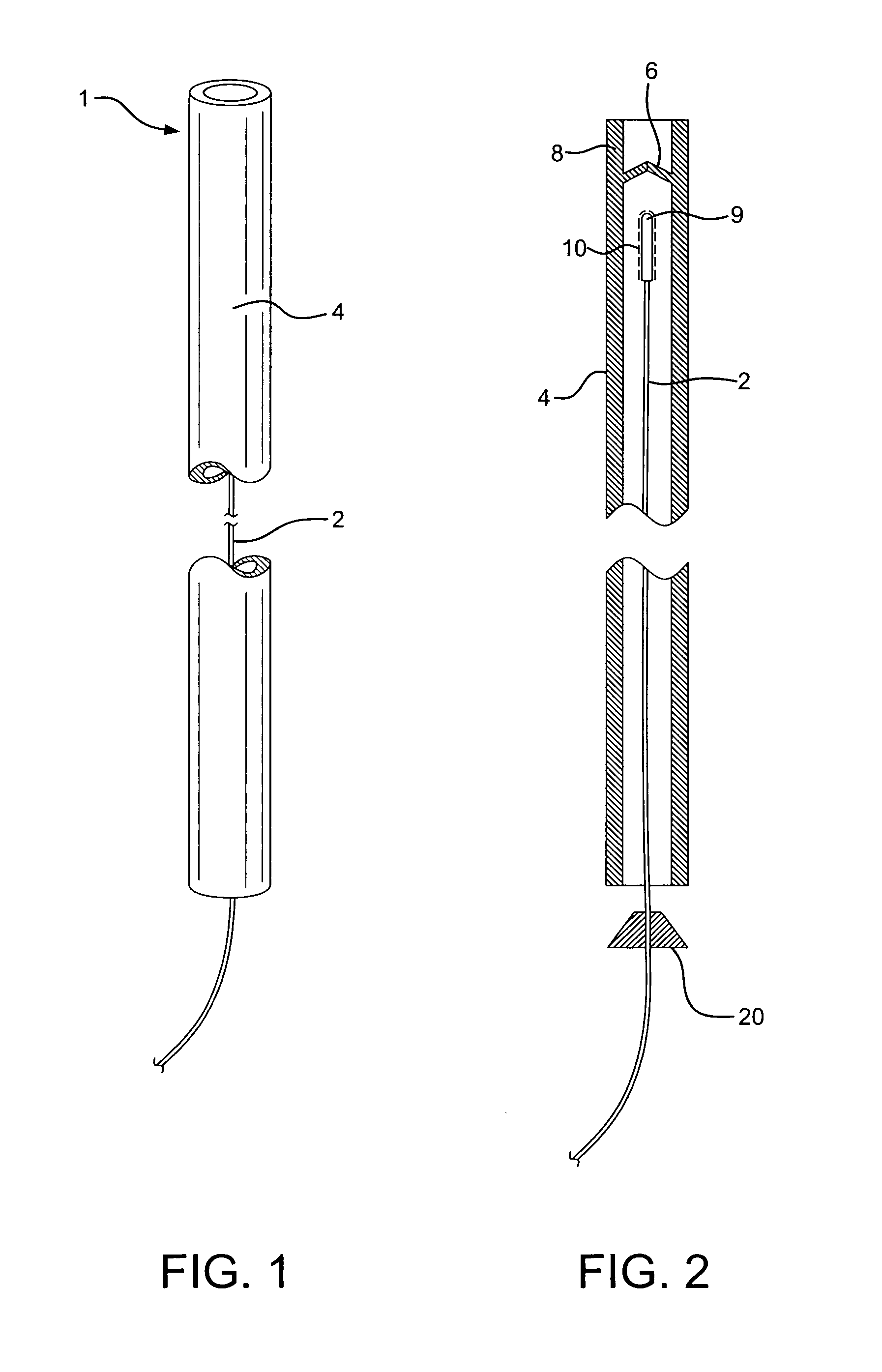Endovascular device and clotting system for the repair of vascular defects and malformations
a clotting system and endovascular technology, applied in the field of endovascular devices and clotting systems for the repair of vascular defects and malformations, can solve the problems of difficult delivery, thrombin injections are not used for intravascular procedures, and carry a significant risk of initiating clotting in normal tissue, so as to improve the treatment of damaged and defective vessels
- Summary
- Abstract
- Description
- Claims
- Application Information
AI Technical Summary
Benefits of technology
Problems solved by technology
Method used
Image
Examples
Embodiment Construction
[0020]The unique device 1 of the present invention comprises a surgically protective sheath, such as hollow, long, micro-catheter 4, with one way valve 6, as a barrier to prevent the clotting material to be applied and deposited on the damaged vessel / tissue, to come into contact with healthy, normal tissue, blood, and other susceptible areas unrelated to the treatment. An elongated appliance such as a trocar or surgical wire 2 is configured to be positioned within and travel through protective sheath 4 to the damaged tissue to be clotted and closed.
[0021]Flexibly, maneuverable wire 2 in the range of 0.014 to 0.026 inches in diameter, is positioned to be advanced through catheter 4, ranging in diameter for 0.018 to 0.035 inches in diameter. (See FIG. 1). Clotting material 10, such as thrombin, biological glues or other sealant, is deposited on tip 9 of wire 2. It is contemplated that approximately 5-10 mm of the end of wire 2 will be coated with clotting material 10, as appropriate f...
PUM
 Login to View More
Login to View More Abstract
Description
Claims
Application Information
 Login to View More
Login to View More - R&D
- Intellectual Property
- Life Sciences
- Materials
- Tech Scout
- Unparalleled Data Quality
- Higher Quality Content
- 60% Fewer Hallucinations
Browse by: Latest US Patents, China's latest patents, Technical Efficacy Thesaurus, Application Domain, Technology Topic, Popular Technical Reports.
© 2025 PatSnap. All rights reserved.Legal|Privacy policy|Modern Slavery Act Transparency Statement|Sitemap|About US| Contact US: help@patsnap.com



